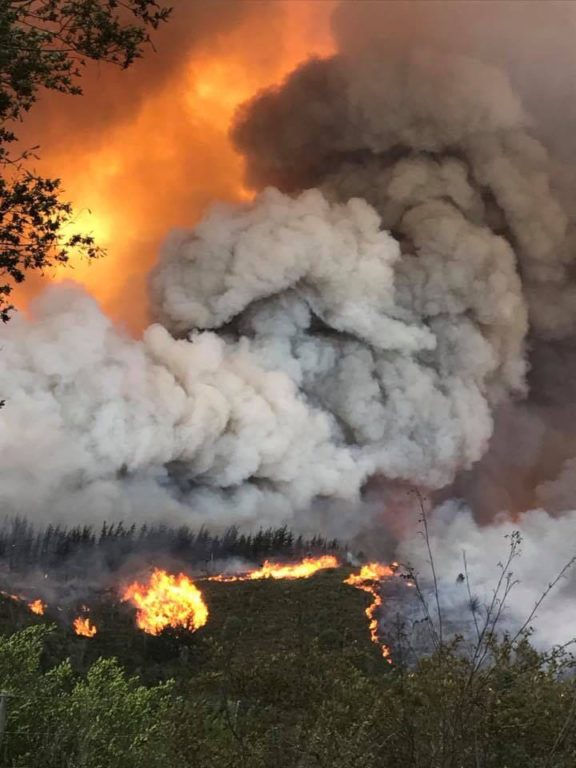A collaborative research report on the devastating Knysna fires which ravaged the area in 2017 has been released. The report covers causes, response and recommendations relating to the fires and makes key points including the role of climate change.
The report, compiled by Santam, the University of Stellenbosch and CSIR, identifies the Knysna fires as a “perfect storm” of meteorological, bio-physical and institutional factors. It also acknowledges underlying risks which are still present in other communities across the Western Cape.
Knysna is situated in a fynbos vegetation area which is naturally flammable and prone to necessary, expected fires. But with the encroachment of houses and an increase in alien vegetation, fires pose more of a risk to people and their property.

Knysna fires n 2017 destroyed property and killed seven people. Source: Twitter
Although it is hard to identify a definitive upward trend both locally and globally, these “mega-fires” are likely to become more frequent as dry seasons extend.
The report explains that there is evidence that fire behavior is changing, becoming more difficult to control.
“Climate change is extending the fire season in Southern Africa, and owing to rising temperatures and the increasing number of high and extreme fire-danger days,” said the report.
While climate change is a global concern and although the global impact of climate change cannot be stopped by South Africa alone, steps can be taken to reduce these fires impact. The report proposes that authorities, exposed communities and landowners take steps to ensure the safety of people and property in high-risk areas.
Recommendations focus on preventing future fires from having the same impact on communities as those in Knysna. Some include improved fire management, a strengthened early warning system and clearing space around homes to avoid having flammable vegetation near homes.
“Everyone has a role to play in this and citizens need to realise their responsibilities and not place all the responsibility on fire management agencies. The insurance industry can play a critical role in supporting risk reduction, and rehabilitation and recovery,” the report concluded.
You may also like
Related Posts
China’s National Health Commission has published a list of controversial coronavirus treatments that have animal...
read more
Warmer sea temperatures in the summer months, especially in February, were recorded and are believed...
read more
The latest report indexing the world's happiest countries has highlighted the important role of...
read more